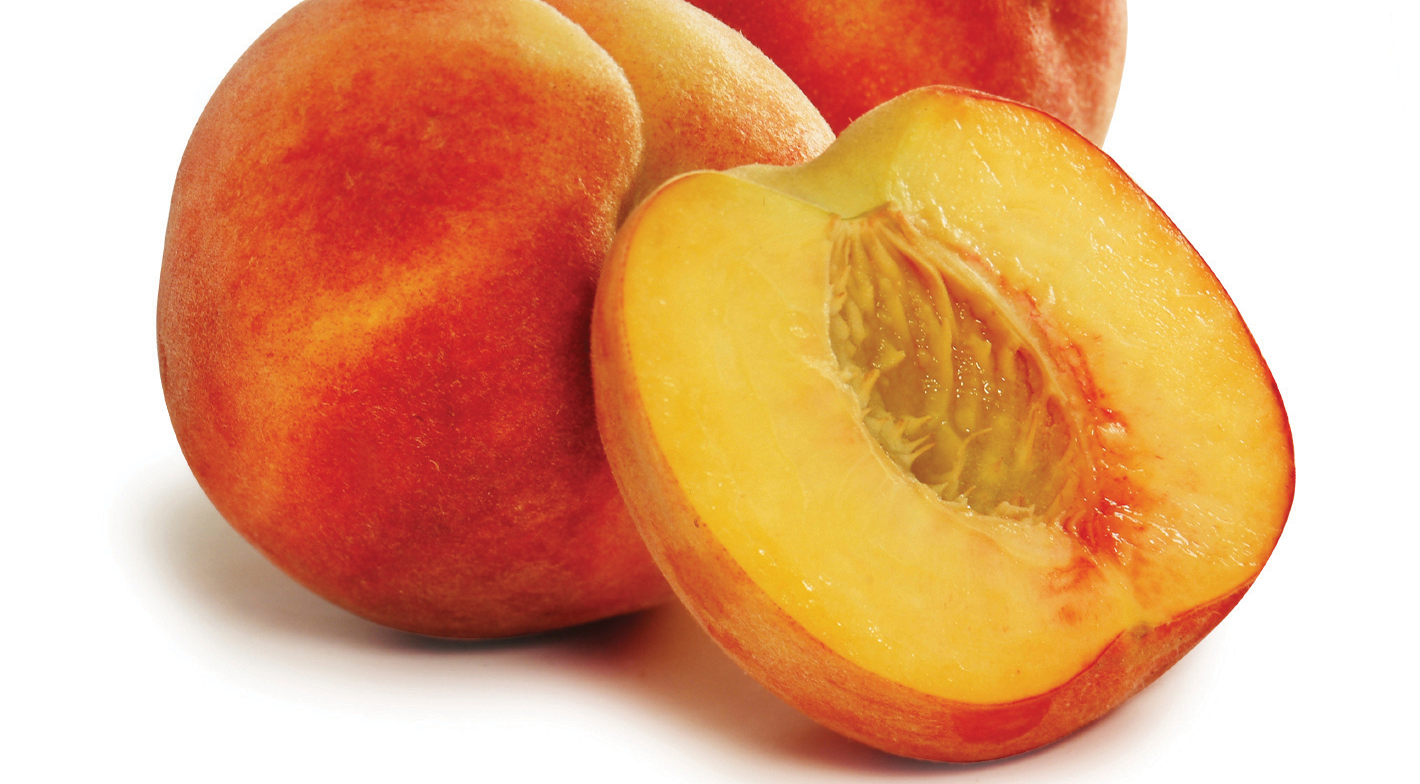MY FAMILY HAD A TRADITION of eating fresh peaches with Pet milk or evaporated milk. Peaches and cream. You know what I’m talking about if you were part of the baby boom generation. Pet milk and mushroom soup were staples in the post WWII kitchens of the 50s.
Remember those canned cling peaches that we were forced to eat in elementary school? Those sad excuses for peaches were typically floating in one of the little compartments on your three section plate with a faded maraschino cherry cap. I never understood until recently why they were called “cling.” I thought that it was a reference to the insipid, sticky canning juice. Guess again. Cling refers to the variety of peach. Cling peaches have a pit or stone that clings to the flesh as opposed to a freestone peach that has an easily removable stone.
I didn’t know I even liked peaches until later in life when I was introduced to the perfectly ripe Chilton County, Alabama freestone peach. I am so grateful that the ladies from Cleckler Farms in Clinton, Alabama, home of these famous Chilton County peaches, drive to the Covington Farmer’s market every weekend throughout the summer. Even the varietal names of their sensuous peaches evoke strong visual images and send my taste buds and olfactory senses into overdrive: Junegold, Dixiered, Harvester and Topaz.
Nothing says summer more than that first bite into a perfectly sweet ripe peach. You know it’s perfect when you have to stand over the kitchen sink to allow the peach juice to run freely down your hands and chin. The fragrance is intoxicating even before you submit to that first bite.
That’s how I prefer my peaches—simply wrapped in their sun-ripened fuzzy skins. If I can control myself from eating them all straight from the bowl, then I can begin to think about how their peachy goodness can be incorporated into sweet and savory edibles for my foodie friends. First, a few tips on how to buy peaches. The basic rule of thumb is to buy the ones that smell the way you want them to taste. Give them a squeeze. Firmer peaches are perfect for grilling, slicing into salads, canning, and adding to salsas. More tender ones can be used in pies and cobblers (see my recipe for the best cobbler ever in Foodies and Friends archives). The soft ones are perfect for eating as is, since peaches don’t hold their shape very well when cooking or baking.
Now, let’s get down to cooking business. Try this recipe from “I am a food blog” and transform a traditional summer panzanella salad into a culinary surprise. Panzanella salad is the best because there is no salad or leafy greens. Instead you toast cubes of a hearty, crusty bread until crispy and combine with other ingredients. Panzanella is usually made with crunchy bread, ripe tomatoes, basil and a tangy vinaigrette. In this peachy panzanella, you will discover summer in a bowl: sweet, juicy peaches, a sour-spicy vinaigrette, creamy mozzarella (or I like to use feta) and some fresh mint to tie it all together.






